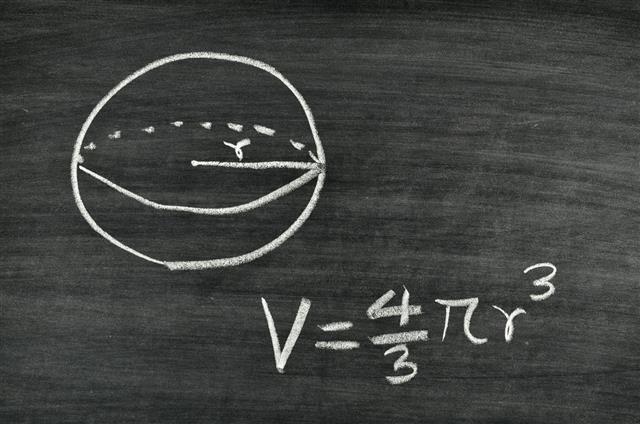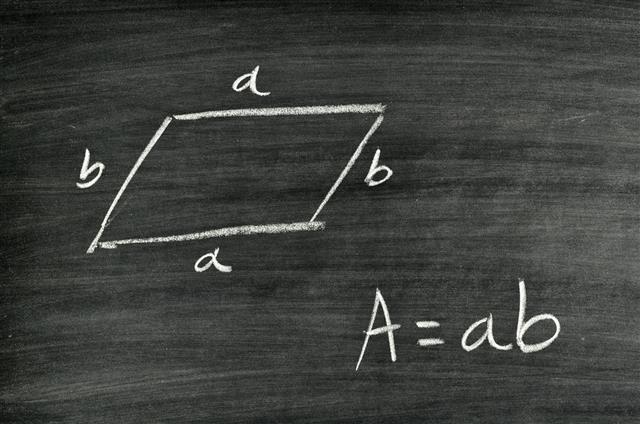
Physics is the most fundamental of all sciences and therefore, its branches have evolved to understand every underlying aspect of the physical world. From particle physics to biophysics, the branches of this subject offer exciting research opportunities for anybody willing to persevere. If you are thinking of making a career in physics, do read this article to get a bird’s-eye view of this vast subject.
Nature’s imagination far surpasses our own.
– Richard Feynman
The division of scientific pursuits into specific branches like physics, chemistry, and biology, is a man-made thing. The universe, the totality of space, time, matter, and energy, knows no divisions; it just operates according to a set of coherent laws, creating evermore beautiful complex works of art. Everything is related to everything else in the universe and therefore, no actual division is possible. It needs to be understood that this segregation of the entire body of knowledge into compartments, is a matter of human convenience.
Like the blind men interpreting the elephant, we create our own theories about the universe, based on what we know. Never restrict yourself to these artificial divisions of the known fields of human knowledge. Passionately explore whatever catches your curiosity and wonder. Physics, in its beginning was known as Natural Philosophy. Back then, the subject wasn’t specialized so much, to be split into hundreds of differentiated fields. Philosophy is man’s attempt at making sense of all that happens in nature, to find the root cause behind everything. So in a way, you could still call it natural philosophy, but it is a science of the most precise kind.
As physicists went on exploring nature at a deeper and deeper level, various physics branches evolved, with a coherent theoretical structure. To describe and provide rationale, for all that happens, from scales lesser than size of a nucleus, to scales larger than galaxies, a different branch was created, at every level. That is because, every branch is based on a set of principles or approximations, that best describe the phenomena at that level.
As illustrated in the accompanying graphic, overall, physics as a field can be divided into four domains, on the basis of the energy and size scale of the entities involved. Physics at the size scale of footballs and planets, and at velocities amounting to a few kilometers per hour, can be explained by classical mechanics. At low speeds but size scales of an atom, the best description of the bizarre phenomena involved, is provided by quantum mechanics. When speeds close to the speed of light are involved (approximately 3 x 108 meters/s), the best theoretical structure that can explain all phenomena is relativistic mechanics. At sizes less than the scale of an atomic nucleus (< 10-15), quantum field theory provides the most accurate explanation of natural phenomena.
The branches of physics can also be broadly divided into two types, which are Theoretical and Experimental physics. The reason for this is best understood in the words of the great physicist, Prof. Richard Feynman. I quote him from the Feynman Lectures on Physics:
The principle of science, the definition almost, is the following: ‘The test of all knowledge is experiment’. Experiment is the sole judge of scientific ‘truth.’. . . Experiment itself. . Gives us hints. . But also needed is ‘imagination’ to create from these hints the great generalizations – to guess at the wonderful, simple, but very strange patterns beneath them all. . And then to experiment to check again, whether we have made the right guess. This imagination process is so difficult, that there is a division of labor in physics: there are theoretical physicists who imagine, deduce and guess at new laws, but do not experiment; and then there are experimental physicists who experiment, imagine, deduce and guess.
I think this adequately explains why there is a division of labor in physics into the two branches. The fields are complementary to each other. Every branch has a theoretical and an experimental discipline. Theory cannot be validated without experiment and experiments cannot be performed without theoretical basis and direction. So here is a quick tour of the entire physics domain. Not only will you be introduced to the nature of knowledge and work in each branch, but you will also be provided with information about the notable discoveries in each domain and the best introductory books.
Physics Branches
Here is a list of the main physics branches, along with a summary of what is studied in each. Every branch is further divided into smaller sub-branches. As explained before, every one of these branches except mathematical physics, has an experimental and theoretical sub-division. The classification of these branches is artificial and they overlap onto each other, to create further specialized fields.
Classical Mechanics
This is the oldest branch of physics, that analytically describes motion of all objects on macroscopic scales. It describes everything from how large objects like balls bounce, why pendulums swing, to how planets revolve around the Sun. It describes mechanics of all kinds on the large scale and it’s termed as classical because it cannot explain motion at the atomic level. The kind of problem, which classical mechanics tries to solve is this. If such are the forces acting on bodies with specific masses, placed at such relative distances, what will the motion of the objects be?
Specifically, it provides a theoretical framework to build deterministic equations of motion, for bodies that are under influence of forces. Three of the primary divisions of the field, according to the type of mathematical formalism used, are Newtonian mechanics (Problems are solved through resolution of force vectors, acting on bodies), Hamiltonian mechanics (The equation of motion is derived from the sum of kinetic and potential energies of the system, known as the Hamiltonian), and Lagrangian mechanics (The equation of motion is derived from the difference between kinetic and potential energies of a system, known as the Lagrangian, using the principle of least action). The third formalism, based on Lagrangian equations of motion, finds applications in the entirety of physics, including quantum mechanics, relativistic mechanics, and quantum field theory.
Traditionally, the field can be divided into the following sub-divisions, which are Statics (the study of systems in equilibrium), Dynamics (Study of motion, in relation to forces), and Kinematics (Study of motion, without reference to its causative agents). Today, the entire field is classified as a part of mechanics.
Notable Discoveries
Newton’s Laws of Gravitation, Newton’s Three Laws of Motion, Newtonian Mechanics, Lagrangian and Hamiltonian mechanics, Noether’s theorem
Best Reference Books
Classical Mechanics by H.Goldstein, Classical Dynamics of Particles and Systems by Marion and Thornton, The Feynman Lectures, Volume 1 by Richard Feynman, Physics by R. Resnick and D. Halliday, Mathematical methods of classical mechanics by V.I. Arnold, Mechanics Volume 1 by L.D. Landau, E.M. Lifshitz (1976), Classical Mechanics Course at MIT OCW by Prof. Walter Lewin
Fluid Mechanics
Fluid mechanics is a specialized sub-branch of classical mechanics, which describes the physics of all types of fluids, including gases, liquids, and plasma. All matter in this field is modeled as a continuum, without taking the individual properties of constituent elements like atoms into consideration. It can describe the behavior of fluids and their properties under various conditions, including their flow through pipes. It can describe real life phenomena like the rise of water from the roots of plants to the top, the flow of rivers, help in the design of airplane wings, hydraulic presses and pumps, help predict weather, and can be applicable in just about every situation where fluids are involved. Aerodynamics (study of fluids like air in particular and the dynamics of flight) and computational fluid dynamics (CFD) (Computationally simulated numerical solutions to fluid mechanics problems) are some of its prime branches. The subject can also be divided into fluid statics and dynamics, describing fluids at rest and in motion.
Notable Discoveries
Navier-Stokes equations (Describe the motion of fluids according to Newtonian Mechanics), Bernoulli’s principle (Describes motion of fluids with very low or zero viscosity), Archimedes’ principle (Describes the buoyant force of a body immersed in a fluid)
Best Reference Books
Fluid Mechanics by J. Spurk, N. Aksel, Fluid Mechanics by Frank.M.White, Course of Theoretical Physics Volume 6 (Fluid Mechanics) by Landau and Lifshitz
Mathematical Physics
The analytical tools required for theory, are provided by mathematical physics. Mathematics is the language that nature speaks. To know how she functions on a deeper level, one must master this language and its every dialect completely. The field is an overlap between physics and mathematics. It provides a rigorous logical base and a complete toolbox, required for the use of sophisticated mathematical machinery in theoretical physics.
Just like a workman must use the right kind of tools to get his job done, so must a physicist use the right mathematical tools to solve a problem. The more and more deeply we explore nature, every new law discovered can only be expressed in a new form of mathematics.
Notable Tools
Differential and Integral Calculus, Complex Analysis, Differential Geometry, Symplectic Geometry, Vector Bundles, Linear Algebra, Spectral Theory of Operators, Functional Analysis, Group Theory, Probability Theory, Topology, Representation Theory, Operator Algebra, Path Integrals
Best Introductory Books
Methods of Theoretical Physics by Morse and Feshbach, Mathematical Methods for Physicists by George B. Arfken, Hans J. Weber, Mathematics of Classical and Quantum Physics by F.W. Byron and R. Fuller, Mathematical Methods in the Physical Sciences by Mary L. Boas, Complex Analysis by Lars Ahlfors
Classical Electrodynamics
This field is the most broadly applied of all the branches. Classical electrodynamics is based on Maxwell’s laws of electromagnetism, which describes all kinds of electromagnetic phenomena from atomic to global scales. It provides the theoretical basis for optics, telecommunication, and many other sub-fields. Its domain extends over all of nature, as the electromagnetic force is all pervading. From the designing of communication antennas to the making of electrical circuits, the field has truly wide applicability.
Notable Discoveries
Maxwell’s equations of Electromagnetism (Provide a description of the behavior of an electromagnetic field and its connection with charges), Lorentz Force (Describes the force experienced by a charge, moving under the influence of magnetic and electric fields), Jefimenko’s equations, Liénard-Wiechert Potentials, Faraday’s law, Lenz’s law
Best Introductory Books
The Classical Theory of Fields by Landau and Lifshitz, Feynman Lectures on Physics: Vol. 2 by Richard Feynman, Leighton, Sands, Classical Electrodynamics by J.D. Jackson, Berkeley Physics Series Vol. 2 by Edward M. Purcell, Classical Electricity and Magnetism by Wolfgang K. H. Panofsky and Melba Phillips
Quantum Mechanics
This branch describes a new kind of mechanics, which can explain phenomena at the sub-atomic level, where classical mechanics fails. From the accurate description of the Hydrogen spectra, prediction of the photoelectric effect, explanation of black body radiation, to describing the structure of molecules, this science, based on the calculation of wave functions that provide the particle probabilities, is one of the most enigmatic physical theories. It is based on the uncertainty principle (which states that the momentum and position of any particle, cannot be known simultaneously, with arbitrary precision) and builds a world picture where everything behaves as both waves and particles. Electromagnetic waves show the properties of particles, acting as quanta of energy, known as photons, while electrons are now known to behave as waves. In the quantum world, particles tunnel through walls, have the probability of existing in multiple locations at the same time, and may be linked with other physically disconnected particles through a mysterious property called quantum entanglement. From the building of efficient semiconductors, lasers, quantum computers, to the study of material properties, quantum mechanics is truly vast in its range of applications.
Notable Discoveries
Schrodinger Equation (Through solution, it provides the wave function describing the motion of a particle), Uncertainty principle, Solution of the Hydrogen Atom, Photoelectric effect, Quantum Hall Effect, Compton Effect
Best Introductory Books
Feynman Lectures on Physics, Vol.3 by Richard Feynman, Modern Quantum Mechanics by J.J. Sakurai, Introduction to Quantum Mechanics by David J. Griffiths, Principles of Quantum Mechanics by R. Shankar
Thermodynamics and Statistical Mechanics
Thermodynamics and statistical physics are core branches, which provide a theoretical mechanism to describe the motion of phenomena in multi-particle systems. Even though single particle motion can be analyzed by quantum mechanics, it cannot describe multi-particle systems analytically, as the variables of calculation are too many. So, a statistical approach is needed, that describes motion of matter in bulk. Thermodynamics is a predecessor of statistical mechanics. It describes the macroscopic properties of particles in bulk. The principles of this statistical science find application in finance and economics. The basic theory finds applications in almost any situation where you are thinking about aggregates of particles.
Best Introductory Books
Statistical Mechanics by R.K. Pathria and Paul D. Beale, Statistical Mechanics by Kerson Huang, Fundamentals of Statistical Mechanics by B.B. Laud, Statistical Mechanics: A Set Of Lectures by Richard Feynman
Condensed Matter Physics
Condensed Matter Physics is a sub-branch of quantum physics and statistical mechanics, which describes all phenomena that occur in matter, existing in condensed form, which includes metals, semiconductors, and all types of materials that exist as congregations of matter. This includes everything from liquids, solids, to gases. The physics of semiconductor devices that power information technology, is a result of research developments in condensed matter physics. It describes all phenomena in bulk matter like ferromagnetism, superfluidity, and superconductivity.
Notable Discoveries
Density Functional Theory, BCS theory of Superconductivity, Kondo effect (scattering of electrons induced by magnetic impurities in metals), Electronic theory of solids, Hubbard Model, Bose-Einstein condensate, Superfluidity
Nuclear Physics
Nuclear physics describes all the phenomena that occur at the level of the atomic nucleus. It deals with and explains phenomena like radioactivity, nuclear fission, and fusion. Developments in nuclear physics led to the production of nuclear weapons like the atom bomb, the Hydrogen bomb, and made nuclear energy source available to mankind. Research regarding the building, maintenance, and deployment of nuclear reactors forms a major part of research, besides the development of nuclear fusion reactors, that may provide completely clean energy at very low cost.
Notable Discoveries and Inventions
Radioactive decay (Alpha, Beta, Gamma), Nuclear fission, Mass energy equivalence relation, Thermonuclear fusion reactions (were discovered to be powering stars like our Sun), Controlled nuclear fusion reactors, Inertial confinement fusion, Nuclear bomb, Artificial transmutation of elements
Best Introductory Books
Introductory Nuclear Physics by Kenneth S. Krane, Nuclear Physics by Kaplan
Relativistic Quantum Mechanics and the Quantum Field theory
This is the physics which describes subatomic particles, that are very small and very fast. It is also known as particle physics. The field is based on the three theoretical foundations of quantum mechanics, special theory of relativity, and the concept of fields. It emerged out of the unification of all these three basic ideas and describes the physics of fundamental particles of matter. It describes all the fundamental interactions of nature (Strong nuclear force, Weak nuclear force, Electromagnetic force), except gravity, through what is known as the Standard Model.
Notable Discoveries
Dirac Equation, Quantum Chromodynamics (describes the interactions of quarks and the strong force, which is mediated by bosons called gluons), Quantum Electrodynamics (Describes the electromagnetic interaction to be a force mediated through photons between charged particles), Quantum Flavordynamics (Describes the weak nuclear interaction as a force mediated through W and Z bosons), Electroweak theory (Theory that unifies electromagnetic interaction, with the weak nuclear force), Discovery of the Higgs Boson at LHC, the experimental confirmation of the existence of quarks and gluons, Renormalization (A technique that eliminates the infinities that arise in field theory calculations), Path Integral formulation of quantum field theory, Feynman diagrams.
Best Introductory Books
An Introduction to Quantum Field Theory by Michael E. Peskin and Dan V. Schroeder, Quantum Field Theory by Itzykson, Quantum Field Theory by Mark Srednicki, Quantum Field Theory by Franz Mandl and Graham Shaw, Quantum Field Theory by Lewis Ryder, QED: The Strange Theory of Light and Matter by Richard Feynman
Astronomy and Astrophysics
Astronomy is the observational study of the universe in all its manifestations and astrophysics (a confluence of all other branches), is the theoretical basis, which can explain all those phenomena. It is the most all-encompassing of all the physics branches, which has that singular goal of explaining every phenomenon that occurs in the universe. From the explanation of what powers stars, the cataloging of galaxies across the universe using terrestrial and space-based telescopes, to the search for extraterrestrial planets, the field encompasses a diverse range of interesting subjects.
Notable Discoveries
Nuclear Fusion Reactions in Stars, Observation of pulsars, supernovas, and quasars, Theory of stellar evolution (explains the birth and death of stars), Theory of solar system formation, Quasars (Quasi-Stellar objects), Discovery of Neutrons Stars and Black Holes
Best Introductory Books
Theoretical Astrophysics Vol.1-2-3 by Thanu Padmanabhan
Relativistic Mechanics, General Theory of Relativity, and Cosmology
The general theory of relativity describes gravitation at all scales. It interprets gravity, not as a force, but as a consequence of the curvature of space-time. Space around massive objects actually gets warped and bent. Gravity is the result of this warping of spacetime. Special relativity unifies space and time into ‘Spacetime’ and general relativity makes it interact with matter. How much space warps, depends on the content of matter and energy in it. In simple words, general relativity is described by, ‘Matter tells space how to bend, space tells matter how to move’.
The power of the principle of general relativity is such, that it gave birth to the new science of cosmology, which provides the framework, that can describe the evolution of the Universe in totality.
Notable Discoveries
Big Bang Theory (describes how the universe emerged from a singularity), Black Holes, Wormholes (Theoretical tunnels through spacetime, that connect to far away points in the universe), Large Scale Structure Formation (the theory describing the evolution of massive structures like our Milky Way Galaxy), Dark Energy (a still mysterious force causing the expansion of the universe), Cosmic Microwave Background Radiation (The afterglow of the big bang)
Best Introductory Books
Gravity : An Introduction To Einstein’s General Relativity by James Hartle, Spacetime and Geometry: An Introduction to General Relativity by Sean Carroll, Gravitation by Misner, Thorne, and Wheeler, An Introduction to Cosmology by J.V. Naralikar, Gravitation: Foundations and Frontiers by Thanu Padmanabhan, General Relativity by Robert M. Wald
This was a whirlwind tour of physics. There are many more specialized sub-branches like Biophysics (the field that applies physics principles to bio-molecular reactions), non-linear dynamics (works on equations of the non-linear kind, that cannot provide exact analytical solutions) and String Theory (a grand unified theory that is aimed at the unification of all fundamental forces). I hope this short guide has intrigued you enough, to explore this vast subject in even greater detail.





